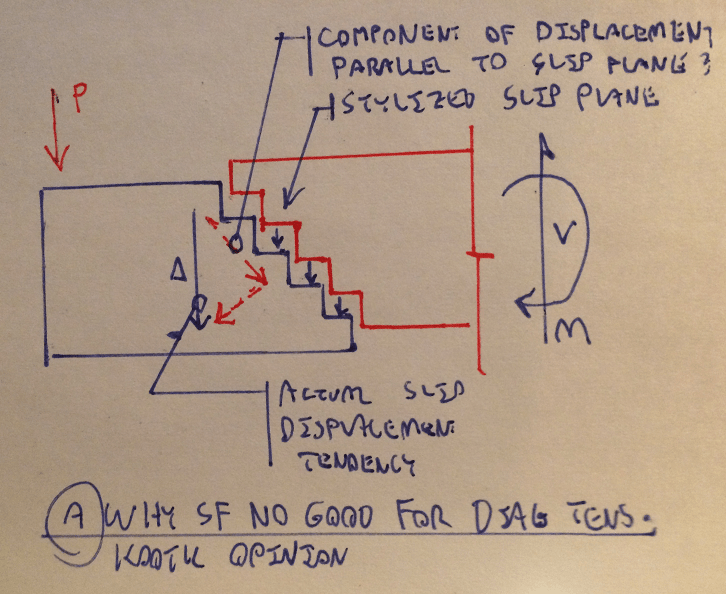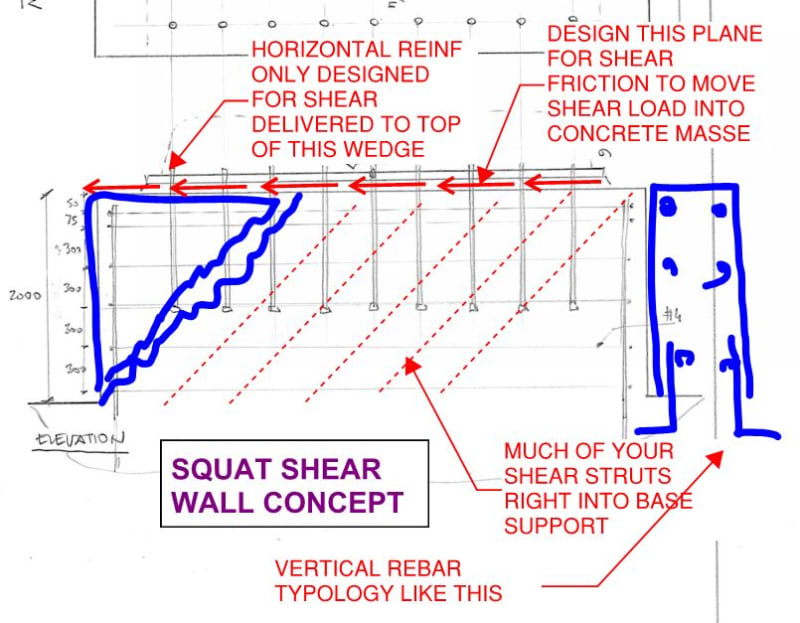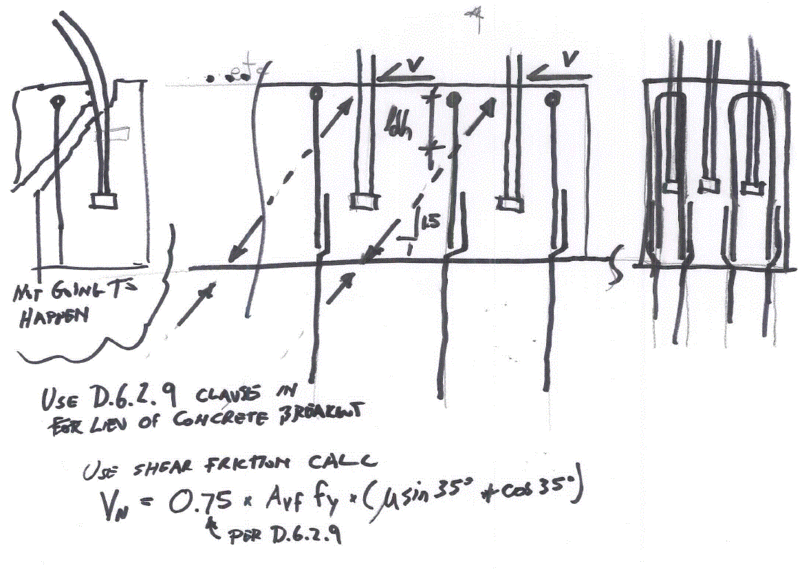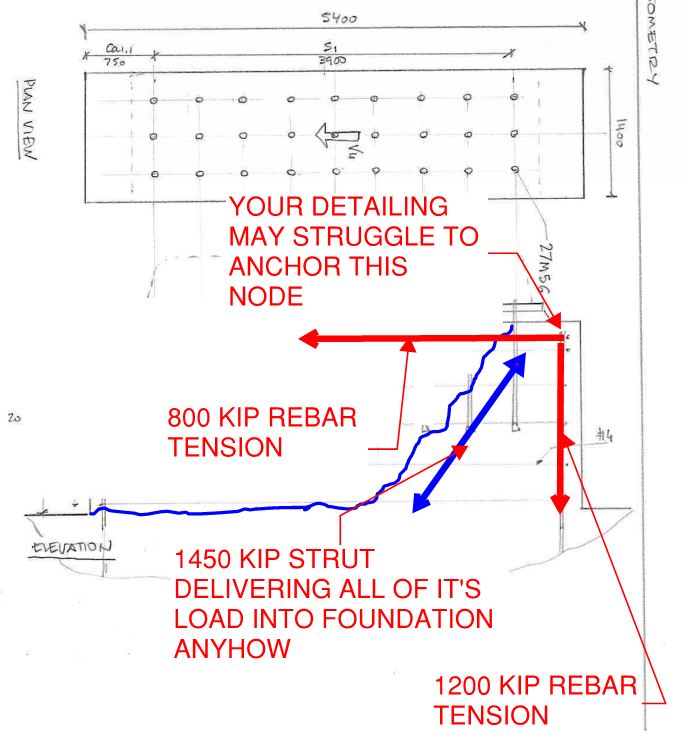darkjmf1
Structural
- Dec 17, 2012
- 50
Hello,
I am having some concerns regarding the shear transfer mechanism of anchor bolts.
Let's say I have a (real big) pedestal (1400x5400 mm, f'c=25MPa) supporting a base plate anchored by 27M56 (Fu=410 MPa) and resisting a factored shear Vu=3600 KN (see attached sketch).
Code is ACI-318-14.
If we design the concrete section for shear, it results that no shear reinforcement is required. For the sake of minima, let's deploy 2 top layers of #4@75 and #4@300 below.
When designing anchor bolts concrete breakout in shear (Cl.17.5.2), if fi·Vcbg<Vu, you need to provide anchor reinforcement (Cl.17.5.2.9).
If we focus in the failure mode described as Case 2, with the total shear resisted on the rear row of anchors, it results in 4000 mm2 (!!!) for one tie of horizontal reinforcement (distributed within height = le).
I know this is a local mechanism to transfer shear from the anchor bolts to the concrete section, but the resulting reinforcement is a lot for a section supposed to not require shear reinforcement.
What am I doing wrong? Please, help me.
Thank you all.
I am having some concerns regarding the shear transfer mechanism of anchor bolts.
Let's say I have a (real big) pedestal (1400x5400 mm, f'c=25MPa) supporting a base plate anchored by 27M56 (Fu=410 MPa) and resisting a factored shear Vu=3600 KN (see attached sketch).
Code is ACI-318-14.
If we design the concrete section for shear, it results that no shear reinforcement is required. For the sake of minima, let's deploy 2 top layers of #4@75 and #4@300 below.
When designing anchor bolts concrete breakout in shear (Cl.17.5.2), if fi·Vcbg<Vu, you need to provide anchor reinforcement (Cl.17.5.2.9).
If we focus in the failure mode described as Case 2, with the total shear resisted on the rear row of anchors, it results in 4000 mm2 (!!!) for one tie of horizontal reinforcement (distributed within height = le).
I know this is a local mechanism to transfer shear from the anchor bolts to the concrete section, but the resulting reinforcement is a lot for a section supposed to not require shear reinforcement.
What am I doing wrong? Please, help me.
Thank you all.





